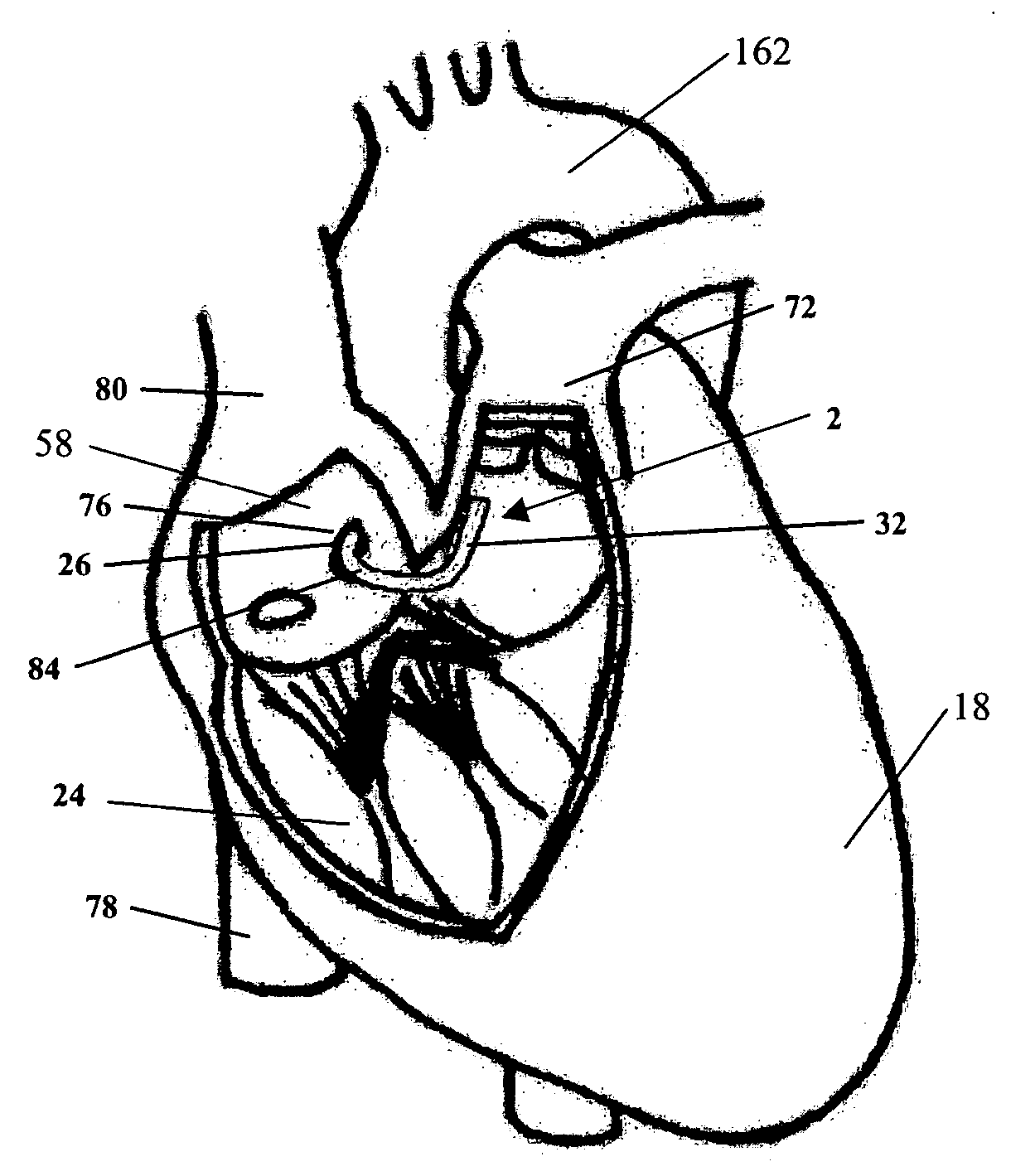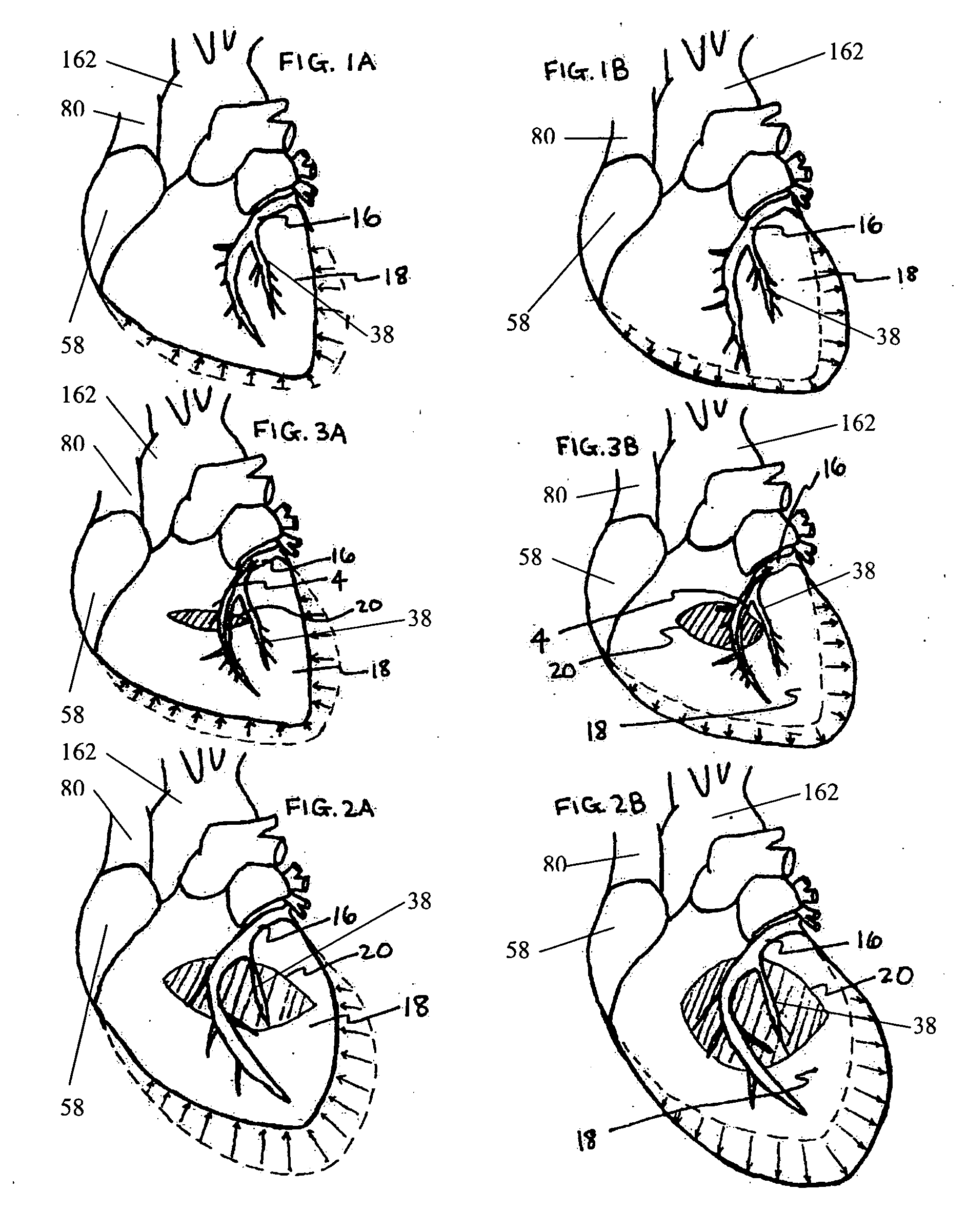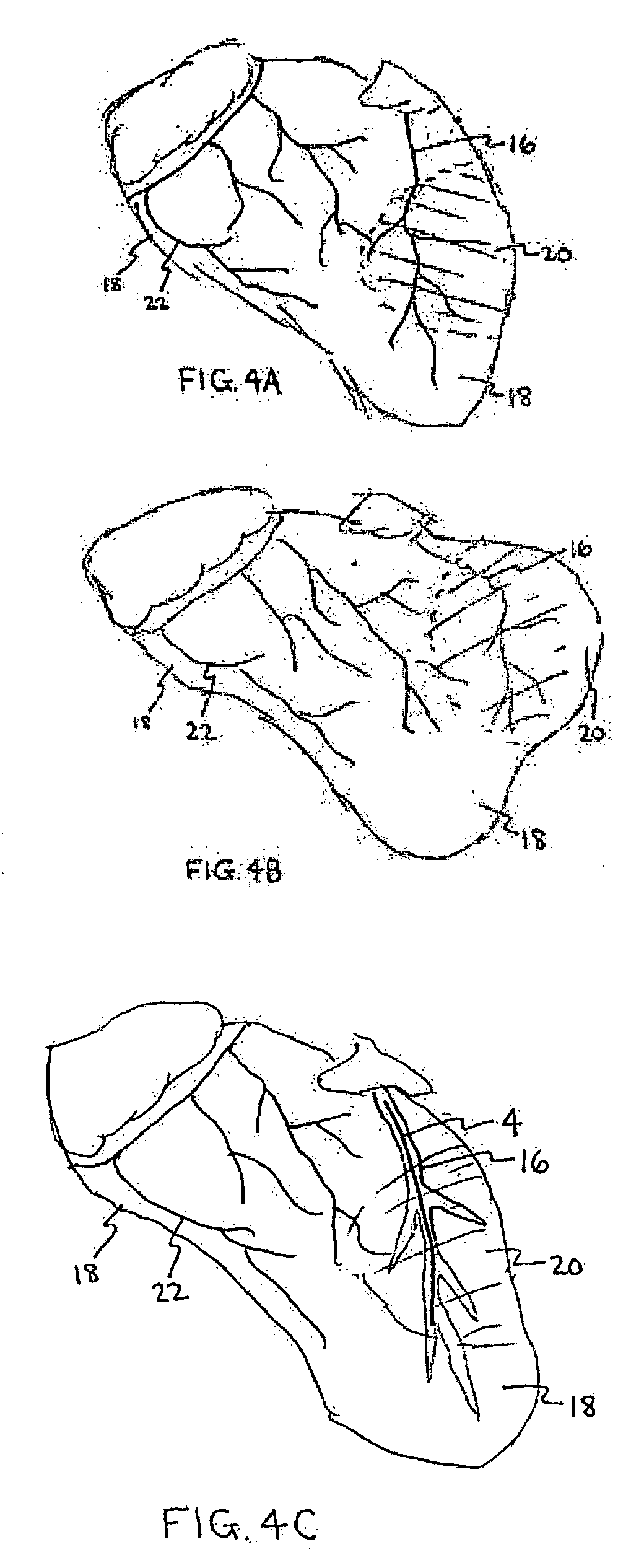Systems for heart treatment
a heart and system technology, applied in the field of minimally invasive medical devices, can solve the problems of inability to properly and adequately fill or empty the blood of the heart, and inability to properly and adequately fill or empty the ventricle, etc., to reduce the volume of the heart muscle, reduce the stress of the wall, and strengthen the wall
- Summary
- Abstract
- Description
- Claims
- Application Information
AI Technical Summary
Benefits of technology
Problems solved by technology
Method used
Image
Examples
Embodiment Construction
[0075] Having described the characteristics and problems of congestive heart failure in the background and summarized hereto, the treatment method and apparatus of the present invention will now be described in detail below. The variations of the invention described below may be used to provide a complete, comprehensive solution to treating congestive heart disease, and the contributing or associated co-morbid, anatomical, and physiological deficiencies. Addressing the multiple factors that affect or cause congestive heart disease can retard or reverse the implicated remodeling thereby treating or mitigating the congestive heart disease and associated symptoms.
[0076] Before the present invention is described in such detail, however, it is to be understood that this invention is not limited to particular variations set forth and may, of course, vary. Various changes may be made to the invention described and equivalents may be substituted without departing from the true spirit and s...
PUM
 Login to View More
Login to View More Abstract
Description
Claims
Application Information
 Login to View More
Login to View More - R&D
- Intellectual Property
- Life Sciences
- Materials
- Tech Scout
- Unparalleled Data Quality
- Higher Quality Content
- 60% Fewer Hallucinations
Browse by: Latest US Patents, China's latest patents, Technical Efficacy Thesaurus, Application Domain, Technology Topic, Popular Technical Reports.
© 2025 PatSnap. All rights reserved.Legal|Privacy policy|Modern Slavery Act Transparency Statement|Sitemap|About US| Contact US: help@patsnap.com



